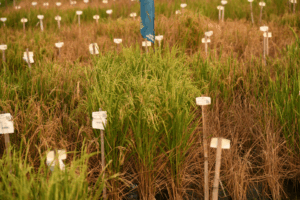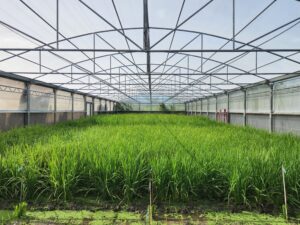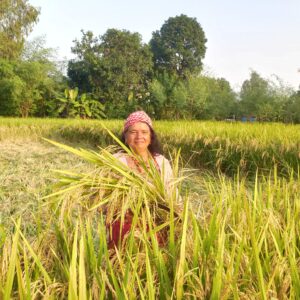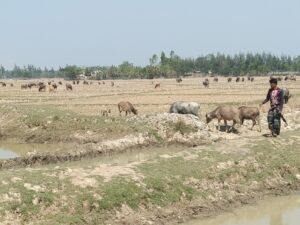Rice and fish production practices can provide local food and nutrition security, income benefits, generate more revenue per hectare than rice monoculture, and produce higher rice yields
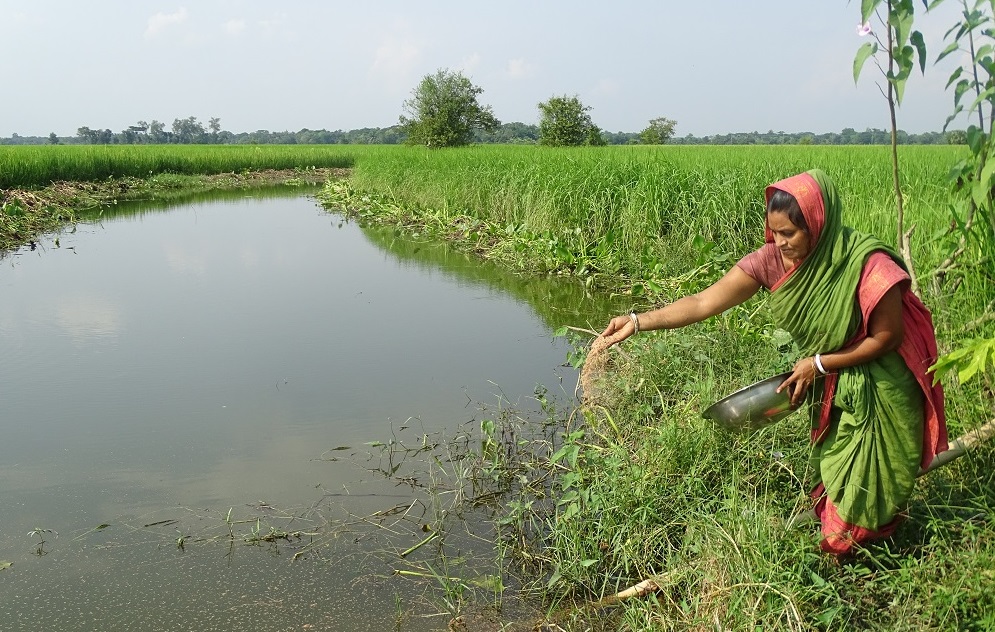
.
The world’s food systems are simultaneously overreaching planetary boundaries and failing to meet nutritional needs. In response, the transformation of current food systems is increasingly called on to minimize environmental impacts and sustain livelihoods while also producing food of sufficient quantity and quality to meet the growing needs and demands of populations globally.
A food system incorporates “all the elements (environment, people, inputs, processes, infrastructures, institutions, etc.) and activities that relate to the production, processing, distribution, preparation, and consumption of food, and the outputs of these activities, including socio-economic and environmental outcomes” (HLPE, 2014).
The transformation toward more sustainable and equitable food systems is a foundation of the Sustainable Development Goals, directly for the second goal “Zero Hunger” and as a critical enabler of many of the other goals. To reshape food systems to meet the environmental, economic, and social challenges of sustainability, we must shift away from a narrow productivity focus that dominated previous “revolutions” in agriculture, aquaculture, and fisheries.
Agroecological practices are important in the package of solutions needed to transform food systems and to build the resilience of livelihoods and landscapes in the face of global change. Agroecological practices are diverse but can be characterized by a generic set of agroecological principles, such as a preferential use of natural processes and a focus on local suitability, equity, and systems management.
The principles are conceptualized in categories of technical and/or biophysical and of organizational, institutional and/or socio-economic attributes and their application occurs in varying degrees along a gradient. These gradients can be used to develop a typology that organizes and describes the diversity of practices within a production sector, e.g., maize and livestock production in the central United States.
A typology of production practices can guide the evaluation of the contribution of various practices to food systems objectives and facilitate planning for transformation pathways to sustainable food systems.
We demonstrate this approach in the context of Asian agricultural landscapes and diets, which have been dominated by rice and fish for more than a millennium. Rice cultivation occurs in a range of agroecosystems, including lowland areas that are seasonally inundated by rainfall and floodplains extending from the edges of rivers and lakes.
These agroecosystems also provide habitats for a “wide range of aquatic species (including finfish, crustaceans, mollusks, reptiles, insects, amphibians, and aquatic plants) used for consumption and/or sale” (FAO, 2014).
Rice-fish production practices (RFPPs) are those where the cultivation of rice takes place while allowing the simultaneous or rotational presence of naturally occurring fish and other aquatic species that are harvested through fisheries; and/or introduced fish populations that are cultured.
Throughout Asia, RFPPs have developed, persisted, and been transformed under a range of environmental, social, and agricultural policy contexts and comprise diverse fish species and rice varieties. The presence of fish within agri-food systems is observed globally and is especially important in food insecure nations.
Despite this, the incorporation of fish in agricultural food security programs is lacking and fish are rarely more than anecdotally mentioned in agroecology and food systems literature, despite their relative resource efficiency among animal sources of dietary protein and rich micronutrient content for diets.
In addition to the production of rice and fish for food and nutrition, RFPPs can provide a range of ecosystem services and farmer benefits, depending on the approach and application of agroecological principles. For example, RFPPs can make efficient use of scarce water and land resources, maintain biodiversity, regulate water flows and water quality, and reduce the need for agrochemicals for rice production.
RFPPs can also provide local food and nutrition security, income benefits, generate more revenue per hectare than rice monoculture, and produce higher rice yields, although rice monoculture can be more cost- and labor-efficient and in some contexts, the economic return from fish replacing a rice crop in a rotational system can be lower than the return from the second rice crop.
RFPPs are not the only agroecological alternatives to rice monoculture: ecologically engineered farm design can enhance biodiversity and ecosystem function; and alternate wetting and drying can reduce water and input use in irrigated systems. The nutritional, environmental, and cultural value of integrated rice and fish production has been recognized in contemporary agricultural discussions since the 1948 convening of the FAO Rice committee.
However, interest in RFPPs has periodically waxed and waned, and has yet to gain traction alongside the more locked-in monoculture production focus. This is at least in part due to the disciplinary approaches to agricultural and aquatic systems research and development that impedes integration among crops and wild and cultured aquatic resources. Currently, agricultural investments increasingly seek to achieve food and nutrition security as well as environmental sustainability objectives, leading to increased interest in agroecological approaches.
To assist in these efforts, we describe the range of RFPPs and evidence of their respective advantages, constraints, and contributions toward sustainable food systems outcomes. This focus is particularly urgent, given that the types of RFPPs that actively stock, enclose, and feed fish are expanding in China and elsewhere in Asia, without consideration of other types of RFPPs that are more aligned with agroecological principles.
To bridge the evidence gap constraining decision-making, we draw on literature to develop a typology to distinguish RFPPs based on the nature and degree of water infrastructure and management, the use of inputs, the source of fish populations, and the institutions that control access to fish.
We illustrate these variations across four RFPP types for which we also highlight current and potential research and innovation to improve the delivery of food system outcomes (specifically, food and nutrition security, equitable and secure incomes, and ecological integrity). We review the trajectory of RFPPs in four case studies from South and Southeast Asian countries and examine the enabling and constraining factors determining the contributions of each RFPP to food systems objectives.
We discuss how RFPPs might contribute to different pathways for food system transformation in rice-producing nations, and explore ways in which research, innovation, and policy might enable the achievement of multiple food system objectives.
Systems perspectives to the concurrent environmental and food and nutrition security challenges we now face are gaining traction in policy arenas, providing an opportunity to embrace diversity in visions of agricultural change. Enabling the contribution of agroecological approaches to transforming food systems has the potential to improve progress toward the “Zero Hunger” Sustainable Development Goal (SDG).
The evidence we synthesize demonstrates this for rice and fish producing regions. Integrated and agroecological rice-fish production practices can contribute to productivity and income for small-scale food producers and to ecosystem maintenance and capacity for adaptation to climate change and natural disasters, in alignment with SDG targets 2.3 and 2.4.
The implementation of the five shifts we propose for food system transformations could maintain or further improve sufficient rice yields and production of rice and fish. Beyond that, these shifts support ecological integrity and biodiversity conservation alongside the provision of a broad range of nutrition and livelihood benefits, commensurate with a holistic vision of sustainable food systems.
Read the study:
Feeed S, Barman B, Dubois Mark, et al. (2020). Maintaining diversity of integrated rice and fish production confers adaptability of food systems to global change. Front. Sustain. Food Syst., 09 November 2020.

